Ten years ago, on September 22, 2011, Dark Souls was released, the video game that has consecrated FromSoftware on the international scene and that has created a new videogame genre. The Dark Soul of the Japanese software house had a gigantic impact on the videogame industry, proposing a playful model that was getting lost in those years. On the occasion of the tenth anniversary of Dark Souls we retrace its history and try to understand why it is such an important video game.
The history of Dark Souls before the Souls
It was the 2000s and the gaming industry was very different to what we are used to today. At that time, video games were still a niche media after all and which was only emerging to the general public at that time. By doing so, however, it was also slowly changing its characteristics to be attractive to new potential markets.
They were just those the years in which the video game he was trying in every way to emulate cinema, precisely in order not to be indigestible to all those who had never approached the videogame medium. This feature soon became the basis for the development of almost all the most important video games of the time, with all the limitations that this entailed.
It was no longer important to try to give the player a concrete challenge and able to test his skills, the focus had rather shifted towards the storytelling and storytelling at the expense of gameplay, with extremely simple games that gave very little satisfaction pad to the hand.
Of course there were exceptions to the rule even then, God of War, Devil May Cry and Ninja Gaiden are a prime example, but it is undeniable that the studios of the time were slowly abandoning the playful dimension of the video game, trying to hold the user by the hand from start to finish. end, and minimize the level of potential frustration.
The fear of course was that the buyer would abandon the product prematurely, due to the negative experience caused by the failure of a given task to be completed.
The troubled story of Demon’s Souls
In 2009 however Demon’s Souls was released, the first game developed by FromSoftware of Hidetaka Miyazaki, that is the game designer from whose mind almost all the recent projects of the studio have been born. Demon’s Souls was a game that went against the trend with everything that was generally considered good game design at the time and it was no coincidence that it was in effect a bet for the software house.
In fact, its history is at least troubled.
The game in development at FromSoftware should initially have been a sort of oriental response to the Elder Scrolls saga, and therefore From decided to pick up the experience made with an old saga of his, King’s Field, to propose a first-person medieval fantasy setting title that served the purpose.
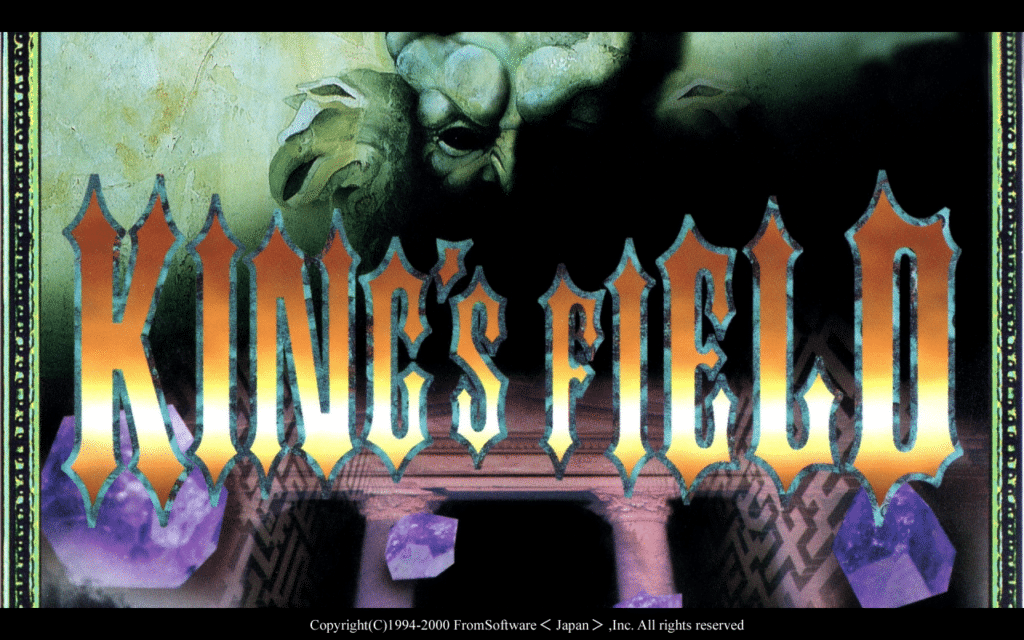
It was a pity, however, that the project lost pieces everywhere and after months of work we began to glimpse the risk of cancellation, despite the large investments made by Sony. It was Hidetaka Miyazaki himself who intervened at that point, who, to be honest, didn’t seem to be exactly the right man at the right time.
Our hero had a degree in social sciences and had entered the videogame sector rather late, finally managing to enter FromSoftware to fill the role of programmer for Armored Core: Lost Raven, in 2004. Myiazaki, however, was a man with a dream, which is to become a developer and create his own video game, giving vent to his creative flair.
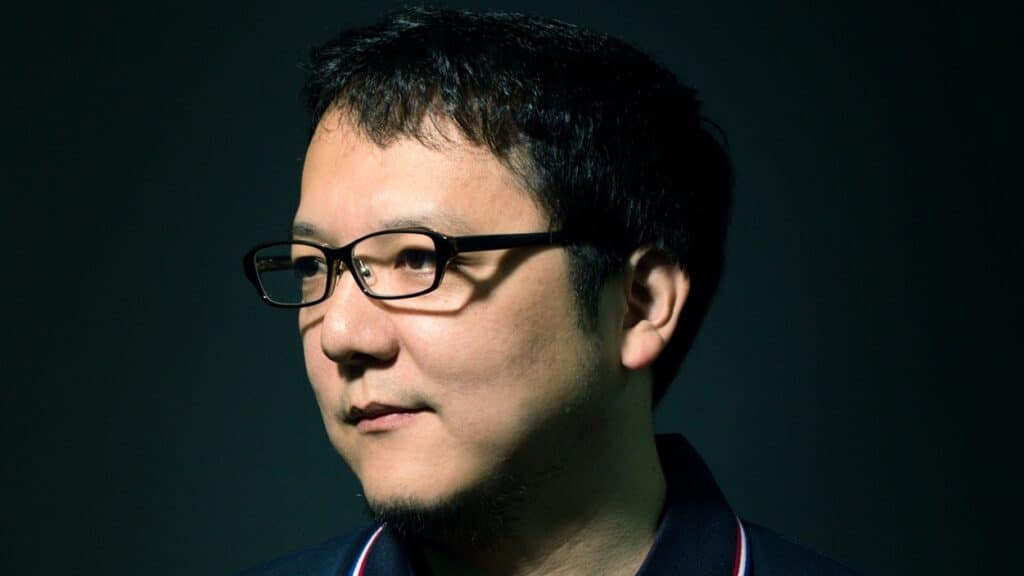
A desire, which as he will later tell himself, was born in him after playing ad ICO, one of Fumito Hueda’s pivotal works, which left an indelible imprint on him.
In short, miyazaki wanted to give vent to his creative vision and his chance arrived sooner than he himself hoped, precisely with the impending bankruptcy of Demon’s Souls. In fact, Sony, rather than throwing the project away, decided to entrust it to Miyazaki, who had two golden opportunities at his disposal at the same time.
On the one hand, the designer could try to shape his dream game, and at the same time he could do it in a relatively safe environment. On the other hand, if Demon’s had gone wrong it would not have mattered too much, since it was a video game already given up for dead even before its release.
The first success
Demon’s was completely reworked by Miyazaki. First of all the perspective was changed from the first to the third person and then all those elements were slowly introduced that would later become the hallmarks of the souls.
We are referring to everyone those playful elements that would later become the cornerstone of the Souls, such as the extremely punishing difficulty, the RPG mechanics, the minimal style of the narrative and the mechanical and methodical combat system, where the player must know how to manage both the moves of his weapon and the stamina necessary to attack and defend himself.
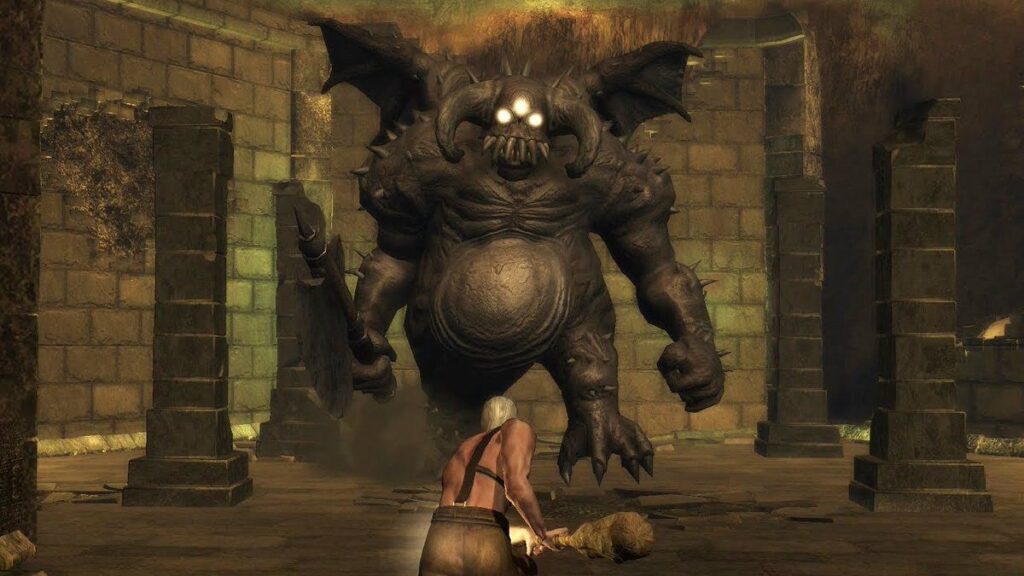
How can we forget the bossfight, always, or almost always, able to intimidate the player with their size, the management of healing items, which are never enough, especially in the early stages, and exploration, which in Demon’s Souls was particularly cruel in terms of checkpoints .
Demon’s Souls briefly started from an idea that is as simple as it is potentially effective: the more difficult the challenge we face, the greater the satisfaction we will feel once completed.
Miyazaki’s first work was not immediately received with great enthusiasm, as you surely have already guessed. On the other hand, for the public and critics of the time it must have seemed that the designer had literally thrown the manual of good Game Design out the window.

When it was released in 2008 the game was snubbed by most audiences and even Shuhei Yoshida, at the time president of Sony, I called it an incredibly bad game after spending two hours in the starting zone and failing to complete it. Precisely for these reasons Demon’s Souls was initially released only in Japan, on February 5, 2009, and at launch, as scheduled, it was a flop, selling just 20,000 copies in the first week.
Fortunately, however, the story of this ambitious and counter-current game does not end with a failure, given that Western audiences began to take an interest in the title and to recover it by import, remaining in all respects overwhelmed by the potential of this strange video game.
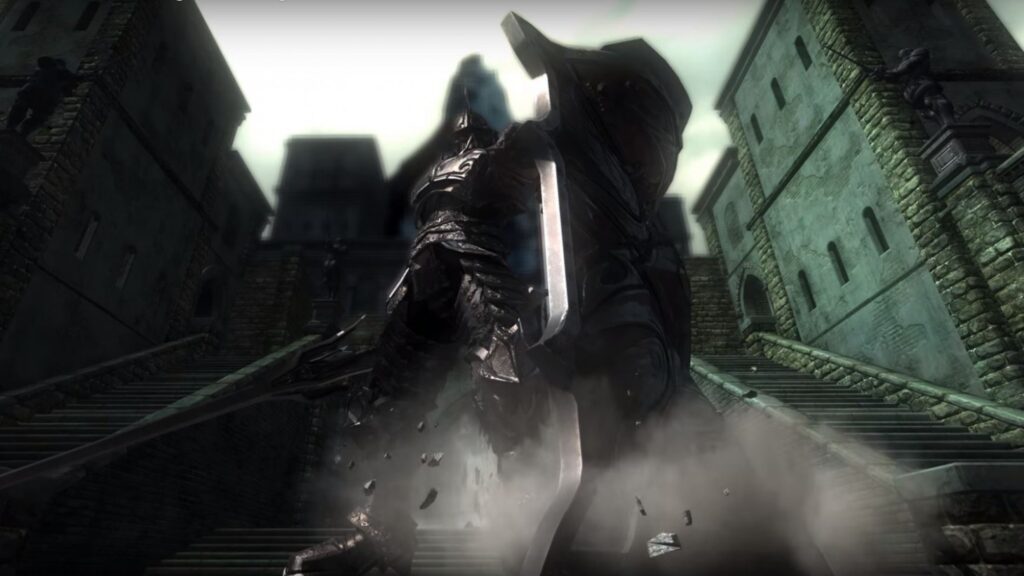
The narrative around this title at that point began to change, with industry experts calling it a old school product, who was not afraid of not compromising in terms of difficulty and with a multiplayer sector implemented in a mode practically never seen before.
In short, in America and Europe Demon’s Souls really liked it so much that it was released in these areas by a different publisher than Sony, not interested in distributing it yet. I’m talking about Namco Bandai for Europe e Atlus for North America, which caught the ball riding this new media phenomenon.
Dark Souls and Miyazaki’s vision
After Demon’s Souls Miyazaki immediately started working on Dark Souls, his spiritual sequel that came out on September 22, 2011. With Dark Souls the designer had the opportunity to model his work from the ground up, unlike the previous project which was based on an already sketched infrastructure, and the final result was something nothing short of surprising.
Dark Souls, in fact, recovered all that was good and innovative in Demon’s and elevated it to the next stage, creating in the process a game world alive, which gave the impression of existing beyond our actions as players.
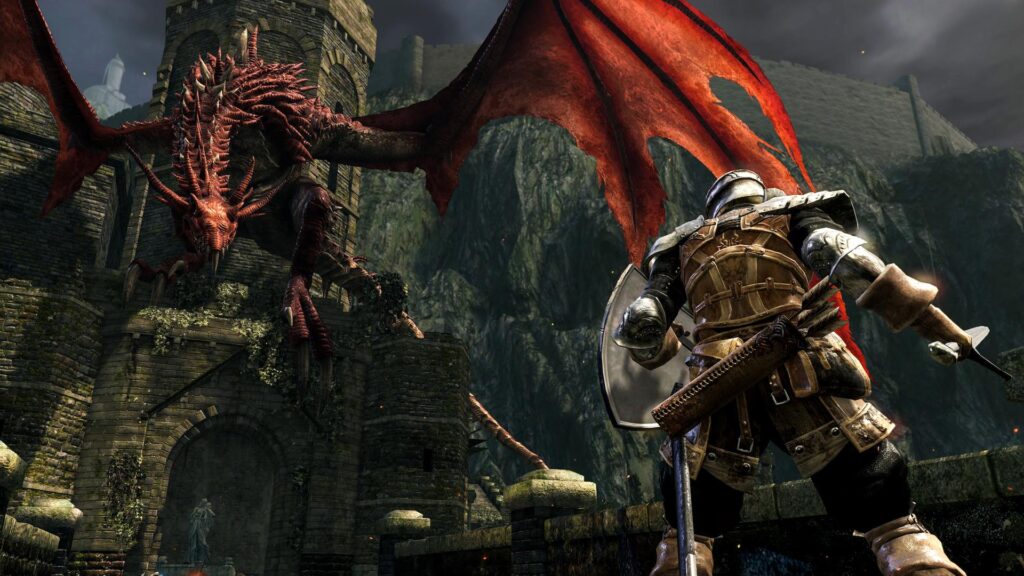
With his new video game Miyazaki wanted something more. Something that was more homogeneous and coherent. So here the designer set himself a much more ambitious goal: create a fully interconnected world, with links between the areas that were credible and, as far as possible, realistic.
He then created the Shrine of the Bond of Fire, a royal center from which various paths unfold that the player could walk freely to explore Lordran, the new game world. Not only that: most of the areas that we initially walked would have made us return to a different point of this large square, in fact one of the most virtuous examples of circular level design ever seen.
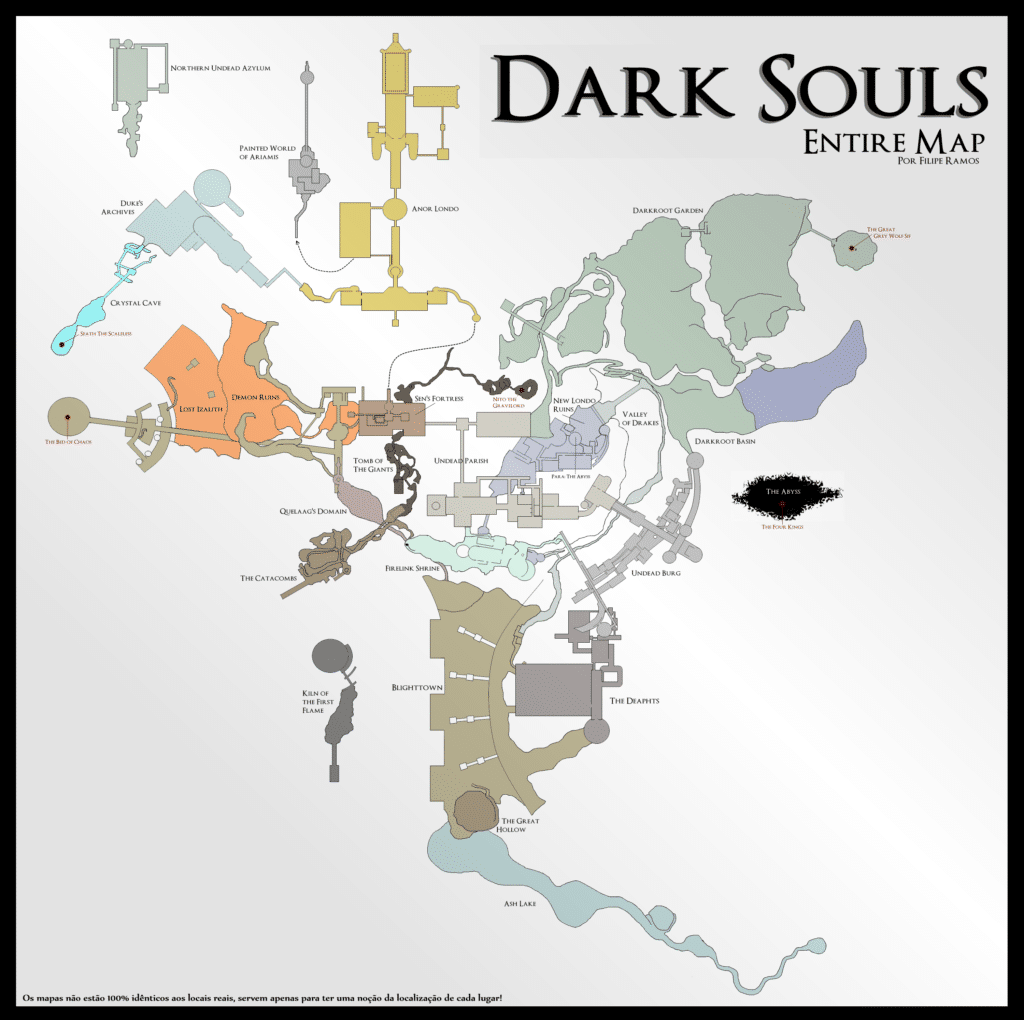
Thanks to this design idea, Dark Souls was also able to change perspective on how to give directions to the player. The game in fact has no real map, since the whole Lordran is specially designed to allow the player to orient himself through visual clues, shortcuts and a realistic management of the topography, purpose built to reward curious gamers who take the time to explore.
From this point of view, the first Dark Souls has no equivalent in any other video game currently in existence. The whole Lordran is a kind of sphere, full of alternative ways to reach this or that place in different ways.
The silent story of Dark Souls
To make the most of this construction of the game world Miyazaki and the development team opted for three specific measures, useful to make Lordran tell his story to the players without resorting to explanations or long narrated cutscenes: the management of checkpoints, the level designs of the areas and the descriptions of the objects.
Let’s start with checkpoint. In the years when Dark Souls was released, video games were starting to discover the wonders of autosave. Almost all games of that period implemented this feature, which saved progress in the background by providing players with a lifesaver against sudden deaths.
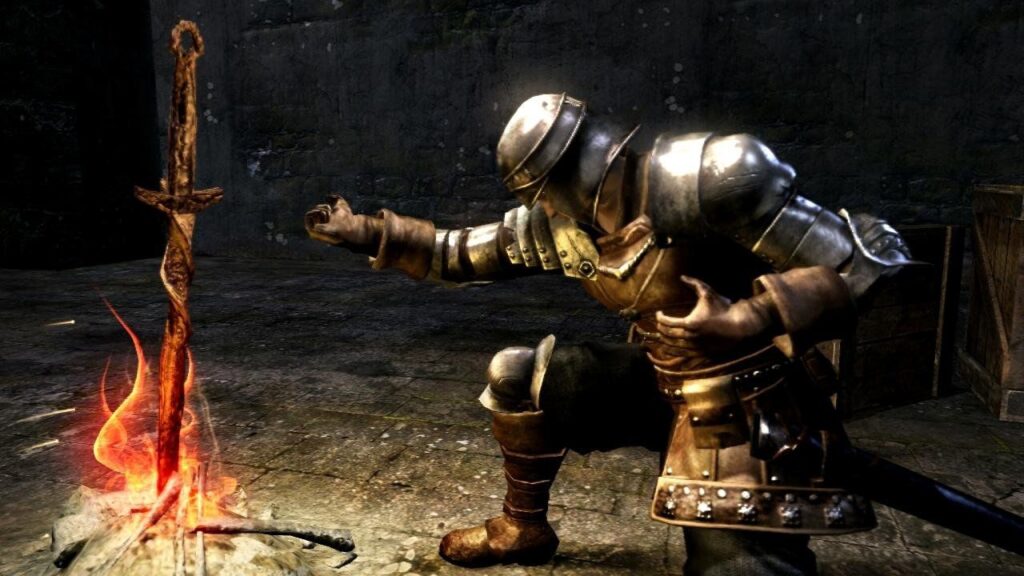
A mechanic that we do not find in Dark Souls, since when you die you return directly to the last bonfire where we rested, without ifs and buts, all enemies come back to life, our accused souls remain where we died, and it is a choice that FromSoftware has taken wisely. This mechanic forces the player to understand the floor plan of the map that he is exploring, finding the best way to recover his remains, in order to avoid losing all his souls.
Simple and clear rules, which you …






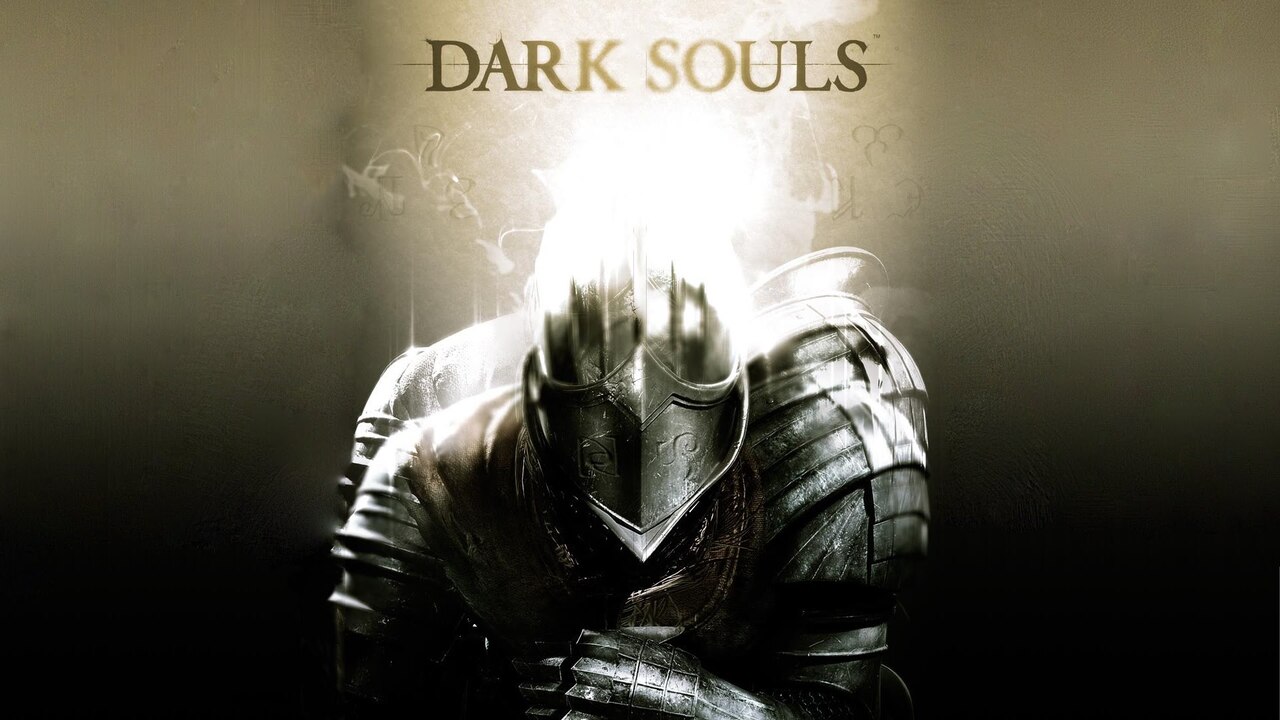





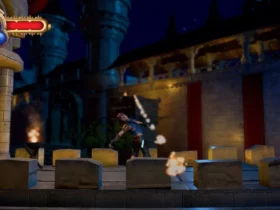

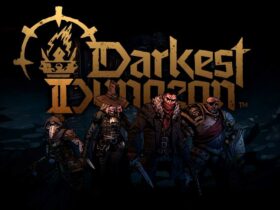

Leave a Reply
View Comments